Your front door matters a lot more than you think.
By Mark Stewart
My first job out of college in the early 1980s was a sales position and the first thing I was told by my manager was to buy a decent pair of shoes. A customer, he explained, is most likely to decide what kind of person you are and what kind of product you’re selling by the quality, condition and style of your footwear. My $20 Thom McAns, in other words, weren’t going to cut it.

Upper Case Editorial
For whatever reason, I didn’t last long in sales—the company happened to be the one Glengarry Glen Ross was based on (second place is steak knives, third place you’re fired) so I count myself fortunate. I’m not sure I ever entirely bought the shoes idea. However, I do believe something similar applies to a home’s front door. The choices you make related to the entrance of your home can say as much or more about you than the cars you drive, the clothes you wear, the school your kids attend or all of the other traditional clues about substance, status and taste.
Think about the last time you attended a party at a new friend’s house, or went home- or apartment-shopping. Aren’t you guilty of passing judgment on what’s inside based on what’s outside? It really is human nature to judge a book by its cover, despite the idiom that says you can’t. So I’ll say it: Your front door matters
According to the Internet, which as we know is right about everything, the average American will own three homes in his or her lifetime. That means, statistically speaking, if you’re on your first home, then you’ve got two more front-door decisions left. If you’re on your third home, well, you can probably skip to the next story. But wait! You can always shop for a new door—in fact, many people do. Which is kind of the point of this article. It’s a fact, in fact, that not everyone sticks with the front door that “came” with their current abode. As with other parts of a home, there’s always impetus for change or room for improvement
I have owned two homes and was fortunate that each one came with a magnificent and unusual front door that would have cost somewhere in the high four figures to duplicate. Fortunate because my spouse (who as a juror would be more likely to convict on the basis of a cheap, ugly front entry than on the basis of criminal evidence) would not have allowed us to move into or, perhaps, even buy our two homes had the doors not checked all of her boxes. As a side note, I have been endlessly amused when I catch people staring at our doors and wondering what kind of freaks live in our house. I mention this only to underscore how very personal a choice it is that we make when we choose a front door

If you actually are in the market for a new door, or maybe just considering a different look, you don’t have to drive through too many neighborhoods to realize that there are a dizzying number of sizes, styles, materials, colors and hardware. Sometimes you’ll see a wow-factor entrance on an otherwise ordinary home. Sometimes you’ll see an utterly featureless front door on a really interesting house. Then there’s that door with a splash of color that’s maybe trying a little too hard. And of course, the door that announces to the world that you don’t care and, by the way, mind your own business. Which is also a choice, in its own way, I suppose
I once talked to a builder who claimed a front door should be like a baseball umpire: you know it’s doing a good job when you don’t notice it at all

High Sierr Custom Door
The basic material choices for a really good-quality front door include metal, fiberglass and old reliable wood. As wooden doors go, it’s difficult to go wrong with mahogany. It is substantial, durable and resistant to insects and rot. Another wood that is popular in areas where insect life is abundant is cedar, which actually repels wood-eating bugs and is full of natural preservatives. It also has an aroma that most people like. Oak is a popular wood for similar reasons, while cherry is known for its strength, density and ability to hold its finish. That’s why cherry is a popular wood for kitchen cabinetry
Round and Round

Upper Case Editorial
In 1881, a German company introduced the concept of a revolving door, which was meant to solve the problem of winter drafts and summer dust getting into commercial lobby spaces. In 1888, a Philadelphia inventor named Theophilus Van Kannel patented the three-panel revolving door, which made him a wealthy man. He also designed amusement park rides at Coney Island, which is probably why small children love to play in revolving doors…or are utterly terrified by them.

In terms of whether to stain or paint your wooden front door, the argument for staining is that it shows off the natural beauty of the wood. Painting gives you an infinite number of color choices, of course, and also offers added durability. The main argument against staining is that a natural-wood door with a lot of direct sunlight may need a fair amount of maintenance, whereas a painted door is likely to hold up better over the long haul. If you know for sure that you’ll be painting your new wooden front door, you can also get away with a less expensive grade of wood

Upper Case Editorial
Wilt’s Place
When Wilt Chamberlain played basketball for the Los Angeles Lakers, he built a glass-walled mansion atop an old WWII anti-aircraft emplacement in Bel Air. The home featured a 14-foot rolling slab of redwood as the front door—supposedly it contained enough wood to frame 17 small homes. He claimed there was no need to lock it because he was the only one strong enough to open it. Gotta love Wilt.
The roller idea was cool, for sure, but also a nod to the realities of gravity. There may not be a side hinge on earth that could bear that weight. The lesson here is that traditional door hinges come with a weight limit, so when choosing hardware, know the weight of your door. An inexpensive door runs just over one pound per square foot, but an oversized oak door could weigh as much as 150 to 200 pounds.
STEPPING INTO THE
Before we move on to other materials and options, let’s do a quick dive into the history of the door. Logic suggests that doors have been with us since humans moved from caves into constructed shelters. That’s not entirely accurate, in the sense that for many millennia, the typical front door was really just a couple of layers of animal hides. Hinged or pivoted doors that swing smoothly open and closed (what we all think of as proper doors) are probably less than 5,000 years old. Archaeologists have found evidence of functioning doors in ancient Egyptian tombs and temples throughout the Middle East, as well as paintings of doors at burial sites, which presumably were meant to represent a passageway to the afterlife. These ancient doors were made of wood or stone, depending on their purpose and available materials. It appears that wooden doors were also being used in Europe around this time

Barbara McManus VRoma Project
The Romans took doors to the next level, using various metals, including bronze, and even creating sliding and folding doors. They actually had a God of doors, Janus, who also covered archways—another architectural specialty of the empire—as well as broader symbolic concepts, including beginnings, endings, time and duality. Roman sculptures of Janus often depicted him as having two faces looking in opposite directions. A small temple, the Janus Germinus, was located at one end of the famous Forum, and was depicted on a coin minted during the reign of Nero in the first century. At about the same time, during Rome’s occupation of Egypt, a Greek engineer known as Heron of Alexandria, designed an “automatic” door. Heron was quite the inventor. He is credited with developing the first steam-powered engine, the first windmill and the first vending machine

Guillaume Piolle
Doors became especially important after the fall of Rome, when order gave way to chaos (or so we are meant to believe). The Dark Ages actually weren’t as bleak as they sound, but a good, solid door was definitely important—whether you owned a castle or just a modest home. For large structures, such as forts and cathedrals, Medieval architects favored oak as a material, joining layered planks together with metal reinforcement bands and fashioning heavy iron strap-hinges that functioned for centuries before wearing out. The wealthier or more important the home- or castle-owner, the more elaborate the door and doorway were likely to be
During the Renaissance, front doors became canvases for skilled craftsmen and often reflected the artistic traditions of different countries and regions.
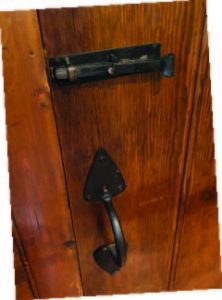
Upper Case Editorial
Michelangelo described the heavily adorned doors of Tuscany as “gates to paradise.” The entrances made for French cathedrals were perhaps the most elaborately conceived doors and doorways in history. These monumental passages were often left open during the day to let in light and air, and then “locked” at night with a big, wooden or metal bolt that fit into or slid across an iron bracket. Mortice locks (a lock system cut into the door and door jamb) were fairly rare at this time for exterior doors
From a technological stand-point, doors and doorways didn’t change much after this. Windows were incorporated into exterior doors in places where the chances of an attack were remote. In the 1700s and 1800s, interior doors began to find their way into everyday homes. Prior to that, families tended to live in one

Upper Case Editorial
large, partitioned room. Doorknobs, door handles, door latches and other durable “modern” hardware began appearing during the Industrial Revolution, both in the U.S. and abroad. These finished goods were expensive prior to the days of mass production; in modest homes, doors were operated by pulling on a leather strap attached to a wooden drop-latch that was threaded through a hole in the door. In the latter part of the 19th century, during the Victorian Era, ornate hardware such as ceramic, brass or mirrored mercury-glass knobs came into vogue

Upper Case Editorial
One Good Turn
The modern lock-and-key set

Craftmaster
, unveiled by Linus Yale in 1848, is called a pin tumbler (or cylinder) lock. His son, Linus Jr., improved on this design in the 1860s. Since then, door locks have remained essentially the same, while most door keys have looked pretty much like the ones you see hanging on displays at your local hardware store. Here’s the Yales’ little secret: They actually built their empire on a concept originated in the 1780s by Englishman Joseph Bramah, a prolific inventor whose crowning achievement was the hydraulic press, a technology still in use today

Jen-Weld
OTHER MATERIALS
Okay back to the 21st century. Wooden doors are not for everyone. From a maintenance, security and energy efficiency standpoint, a metal door (below) might be a better choice. The industrial look is very popular now, too, so for certain modern homes, wood doesn’t make a lot of sense. One crucial caveat about a metal door is that it either must fit the existing framing exactly, or you’ll have to rip out the entire front entrance. Hanging a new metal door on an old frame is asking for trouble; remember, you can’t plane down metal if it rubs or sticks somewhere. In terms of durability, metal doors are great but they don’t necessarily last a lifetime. Depending on how they are constructed and the climate conditions they face, even the most expensive steel doors can “peel” over time. They can also be marred or dented, which is difficult to repair and can invite rust.

Modern Steel Door Co.
So what about fiberglass? Well, a fiberglass front door (above) would be a deal-breaker for my wife, but I wonder if she could honestly tell the difference between painted wood and top-quality painted fiberglass from more than a foot or two away. (I’m sure I’ll find out before she even finishes this story). I’m just saying “wood-grain” fiberglass products can look pretty convincing, if you ask me. The main drawback of this material is that it’s not one of the other two materials. The pros of fiberglass are many. Fiberglass doors have great insulating properties, they are more scratch- and dent-resistant than metal, and they have a similar “feel” opening and closing as wood does.
If you’re keeping score, here’s where we are: fiberglass is best from an upkeep standpoint, metal (steel) is the best for strength and security, while for most people wood holds the aesthetic advantage.
Price-wise, there are significant differences. A big, beautiful wood door can run $5,000 or more. Because they do absorb moisture, wood doors also need to be sheltered from the elements, under a porch or portico, so there may be an added expense there. Our current front door is almost four feet wide and nearly eight feet tall. It is magnificent. It is priceless. It is one-of-a-kind. However, on a humid summer day, you need to put your shoulder into it to get it all the way closed.
A top-of-the-line thick-gauge steel door will run you less than half of a comparable-quality wood door, although it’s not really fair to compare them. As I mentioned earlier, the cost may rise significantly based on what you’re replacing and the condition of the door jamb and surrounding framework. You also need to hire someone who’s done a bunch of them, and done them well. You don’t want some jack-of-all-trades learning on your dime.
Fiberglass comes in somewhere between steel and wood, even though you’ll see some advertised at bargain prices. Trust me, they are no bargain. You want a door you won’t have to think about for 20 years, and that may run you $2,000 or more installed.
One final word of advice: Be smart about choosing your installer. If you are undergoing a wallet-ectomy to buy a top-quality manufactured door, regardless of the material, give a lot of thought to who is installing it for you. Most of the top brands have trained or certified contractors to deal specifically with their doors. Really, they do. So even if you have a favorite carpenter or handy-person, you might want to look at a list of recommended installers.
What about the DIY route? Well, many years ago, I attempted to install a brand-new kitchen door in a very old house. I was young and stupid (in other words, still in my 20s) and figured a rectangle is a rectangle, a tape measure is a tape measure…how hard could this be? That door never closed without emitting the same exasperated groan my wife did the day I announced I could “do it myself.”
Later, when we were selling the house, I could sense that the prospective buyers were spending a lot of time looking at that door and wondering what else I had “fixed.” I learned my lesson: When it comes to doors, skip the Thom McAns and go for the Ferragamos. It is money well spent.

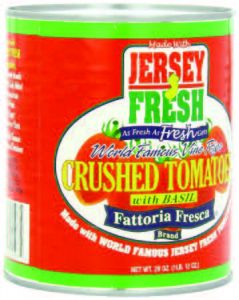 Bob Sickles explains that the local products excel over the mass-produced sauces. “While a larger production will process all the tomatoes, whether they are ripe or still green, and get a good sauce which has a higher acid flavor, the producers of the local sauces use hand-picked tomatoes and make sure they all are ripe. This creates a sweeter sauce, which is more work intensive and therefore has to be a bit more expensive. But it’s worth it.”
Bob Sickles explains that the local products excel over the mass-produced sauces. “While a larger production will process all the tomatoes, whether they are ripe or still green, and get a good sauce which has a higher acid flavor, the producers of the local sauces use hand-picked tomatoes and make sure they all are ripe. This creates a sweeter sauce, which is more work intensive and therefore has to be a bit more expensive. But it’s worth it.”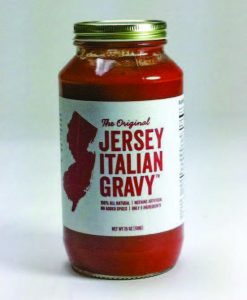 Not going on Bob’s word alone, we conducted a non-scientific tomato sauce taste test engaging four individuals with limited “foodie” credentials. In the mix were four New Jersey tomato sauces with slightly differing prices that can be purchased around the state—Nanina’s (25 cents per ounce) from Belleville, Manno’s (30 cents per ounce) from Bradley Beach, Jersey Italian Gravy (40 cents per ounce) from Ridgewood and Jar Goods (50 cents per ounce) from Hoboken—as well a bottle of Cabernet Sauvignon and a loaf of fresh ciabatta bread for dipping into the sauces.
Not going on Bob’s word alone, we conducted a non-scientific tomato sauce taste test engaging four individuals with limited “foodie” credentials. In the mix were four New Jersey tomato sauces with slightly differing prices that can be purchased around the state—Nanina’s (25 cents per ounce) from Belleville, Manno’s (30 cents per ounce) from Bradley Beach, Jersey Italian Gravy (40 cents per ounce) from Ridgewood and Jar Goods (50 cents per ounce) from Hoboken—as well a bottle of Cabernet Sauvignon and a loaf of fresh ciabatta bread for dipping into the sauces. According to our tasting panel, all the sauces were winners, yet different. The least expensive, Nanina’s, provides a very good, all-purpose kitchen staple. One taster’s favorite, Manno’s marinara, was particularly gutsy with herb and garlic flavors punching out on our palates. This sauce would be good with seafood. Delicious Jersey Gravy was thicker and sweet. And the rich, full-bodied Jar Goods was the densest sauce, almost like a paste, offering a fruity, sweet flavor.
According to our tasting panel, all the sauces were winners, yet different. The least expensive, Nanina’s, provides a very good, all-purpose kitchen staple. One taster’s favorite, Manno’s marinara, was particularly gutsy with herb and garlic flavors punching out on our palates. This sauce would be good with seafood. Delicious Jersey Gravy was thicker and sweet. And the rich, full-bodied Jar Goods was the densest sauce, almost like a paste, offering a fruity, sweet flavor.





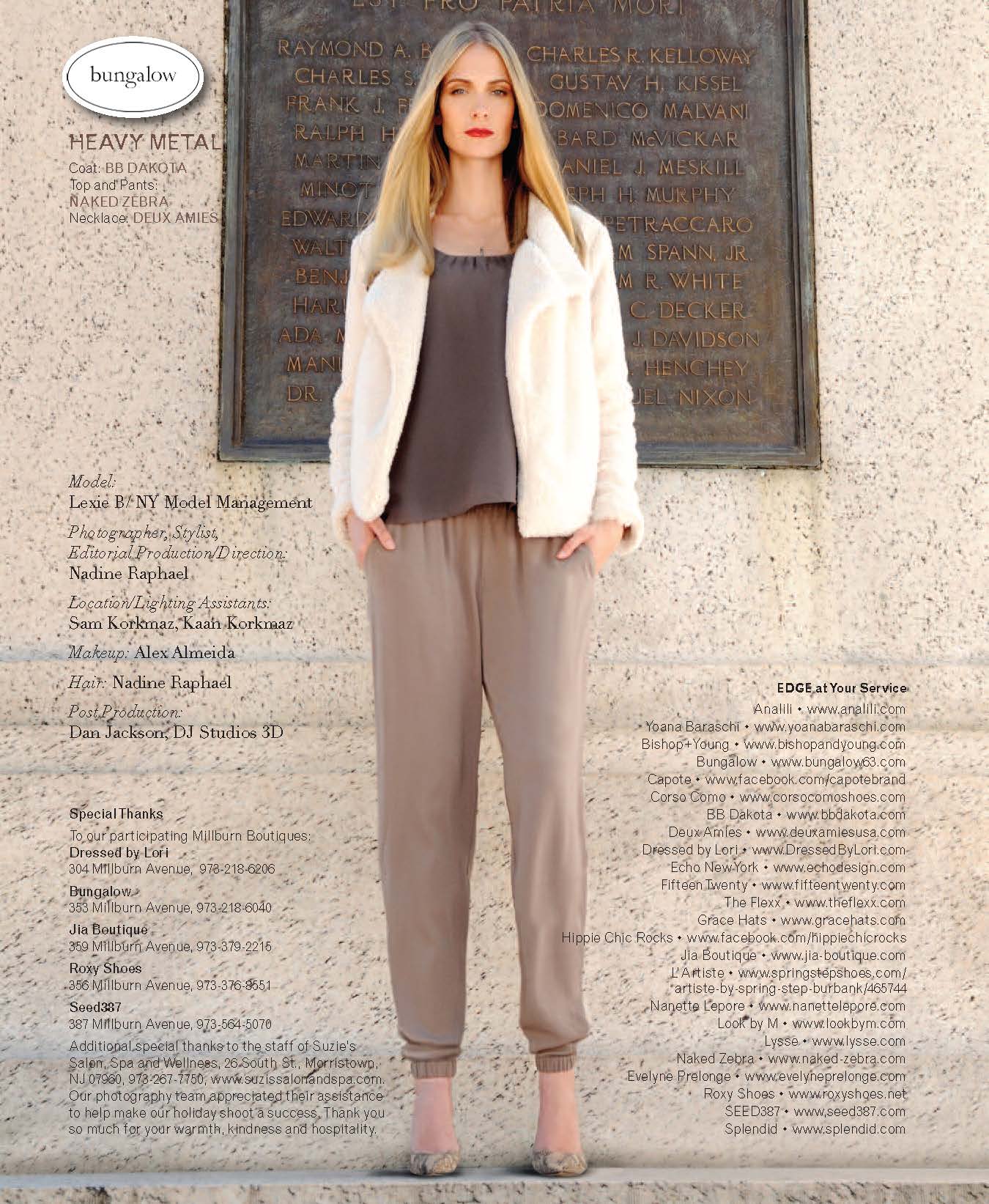



 Do you have a hot topic for Dr. D’Angelo and his Trinitas ER team?
Do you have a hot topic for Dr. D’Angelo and his Trinitas ER team?

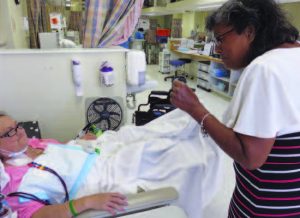 Angela reminds her fellow patients to never stop asking questions or learning about their own treatments. She encourages them to pay attention to their bodies and listen for cues, reminding them that nurses and doctors can only do so much; it’s up to the patients to communicate how they’re feeling and responding.
Angela reminds her fellow patients to never stop asking questions or learning about their own treatments. She encourages them to pay attention to their bodies and listen for cues, reminding them that nurses and doctors can only do so much; it’s up to the patients to communicate how they’re feeling and responding. 

 If you’ve just been diagnosed, or if you’ve been living with diabetes, quality medical care, encouragement and education can make a difference in your daily life.
If you’ve just been diagnosed, or if you’ve been living with diabetes, quality medical care, encouragement and education can make a difference in your daily life.



 So what’s my magic formula for buying smart? As I look back on my career and experiences as an art historian, dealer, appraiser and collector, I think it’s a little bit of patience, a fair amount of scholarship, and being in the right place at the right time. I offer as evidence four war stories…
So what’s my magic formula for buying smart? As I look back on my career and experiences as an art historian, dealer, appraiser and collector, I think it’s a little bit of patience, a fair amount of scholarship, and being in the right place at the right time. I offer as evidence four war stories…
 ART BUYER’S CHECKLIST
ART BUYER’S CHECKLIST

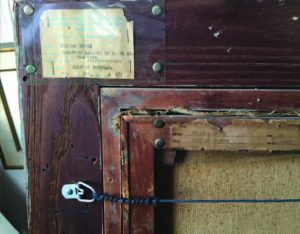 STEALING ONE FOR A C-NOTE
STEALING ONE FOR A C-NOTE QUICK! WHICH WOULD YOU PICK?
QUICK! WHICH WOULD YOU PICK? The Musicians painting on the left is what I would refer to as a decorative piece: pleasing to look at, easy to interpret and utilizing only a moderate degree of skill. It’s not a deep image, but it’s light, dynamic and charming, albeit somewhat superficial. The signature is completely indiscernible (this could be intentional) so I cannot look up the artist’s bio or see any type of track record. A closer look indicates materials that would not be considered high-quality or archival (stretcher wood, frame, canvas). In spite of this, it’s an enjoyable decoration, but that is its only value.
The Musicians painting on the left is what I would refer to as a decorative piece: pleasing to look at, easy to interpret and utilizing only a moderate degree of skill. It’s not a deep image, but it’s light, dynamic and charming, albeit somewhat superficial. The signature is completely indiscernible (this could be intentional) so I cannot look up the artist’s bio or see any type of track record. A closer look indicates materials that would not be considered high-quality or archival (stretcher wood, frame, canvas). In spite of this, it’s an enjoyable decoration, but that is its only value. This was a great find, and a team effort that turned out to be very profitable. To me, as an art historian, however, the more important piece was that through luck and persistence, I was able to re-open and re-invent an artist whose life’s work was relegated to a suburban garage. Wow. This amazing journey has made me now want to shed more light on other artists from the first quarter of the 20th century. It also got me more interested in illustrations. It was a beautiful circle.
This was a great find, and a team effort that turned out to be very profitable. To me, as an art historian, however, the more important piece was that through luck and persistence, I was able to re-open and re-invent an artist whose life’s work was relegated to a suburban garage. Wow. This amazing journey has made me now want to shed more light on other artists from the first quarter of the 20th century. It also got me more interested in illustrations. It was a beautiful circle.
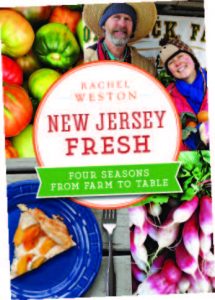




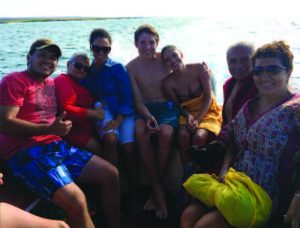 The members of my international crew were actually part of a sort of extended family. My Ukrainian-American mother, Christina, had retired to a seaside village in Ecuador a few years ago. Her Ecuadorian friend, Maria, came up with the idea to make the trip to the islands (which sit roughly 600 miles off the Ecuadorian coast). It turns out Maria’s parents had actually lived on one of the islands, Floriana, some 70 years ago, when her father worked for the government. Yet neither Maria nor my mother had ever been.
The members of my international crew were actually part of a sort of extended family. My Ukrainian-American mother, Christina, had retired to a seaside village in Ecuador a few years ago. Her Ecuadorian friend, Maria, came up with the idea to make the trip to the islands (which sit roughly 600 miles off the Ecuadorian coast). It turns out Maria’s parents had actually lived on one of the islands, Floriana, some 70 years ago, when her father worked for the government. Yet neither Maria nor my mother had ever been. We began our journey in Puerto Ayora, most populous town on Santa Cruz and the tourist hub of the islands. There we began our love affair with Galapagos snorkeling. The biodiversity was astounding, though not always what I’d expected. I’ve done a lot of snorkeling in warm water, including the Red Sea, where colorful fish and plants live among stunning coral formations. In the frigid waters off Santa Cruz, the colors were muted and the sea floor crowded with starfish, sea cucumbers and various non-tropical fish species. In the deep water areas sharks swam stealthily below us.
We began our journey in Puerto Ayora, most populous town on Santa Cruz and the tourist hub of the islands. There we began our love affair with Galapagos snorkeling. The biodiversity was astounding, though not always what I’d expected. I’ve done a lot of snorkeling in warm water, including the Red Sea, where colorful fish and plants live among stunning coral formations. In the frigid waters off Santa Cruz, the colors were muted and the sea floor crowded with starfish, sea cucumbers and various non-tropical fish species. In the deep water areas sharks swam stealthily below us. THE LOCALS
THE LOCALS
 GALAPAGOS IN A BOX
GALAPAGOS IN A BOX
 My mother, who is nearly 70, is in pretty good health and full of energy. She observed that many of the activities may be too challenging for families with small children or people with a physical infirmity, even a slight one, due to some of the terrain like steep steps, long walks and the need to constantly climb in and out of small boats.
My mother, who is nearly 70, is in pretty good health and full of energy. She observed that many of the activities may be too challenging for families with small children or people with a physical infirmity, even a slight one, due to some of the terrain like steep steps, long walks and the need to constantly climb in and out of small boats.










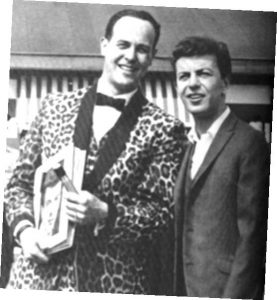


 Grain & Cane Bar and Table • Maine Lobster Benedict
Grain & Cane Bar and Table • Maine Lobster Benedict  The Thirsty Turtle • Pork Tenderloin Special
The Thirsty Turtle • Pork Tenderloin Special 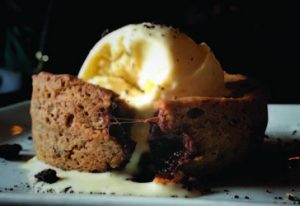 The Thirsty Turtle • Brownie Sundae
The Thirsty Turtle • Brownie Sundae 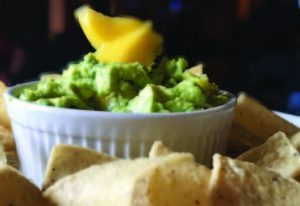
 Arirang Hibachi Steakhouse • Pork Belly Bao Buns
Arirang Hibachi Steakhouse • Pork Belly Bao Buns  LongHorn Steakhouse • Outlaw Ribeye
LongHorn Steakhouse • Outlaw Ribeye  Ursino Steakhouse & Tavern • House Carved 16oz New York Strip Steak
Ursino Steakhouse & Tavern • House Carved 16oz New York Strip Steak 
 BACK TO SCHOOL
BACK TO SCHOOL  2020 GOLF CLASSIC RAISES $213K
2020 GOLF CLASSIC RAISES $213K 


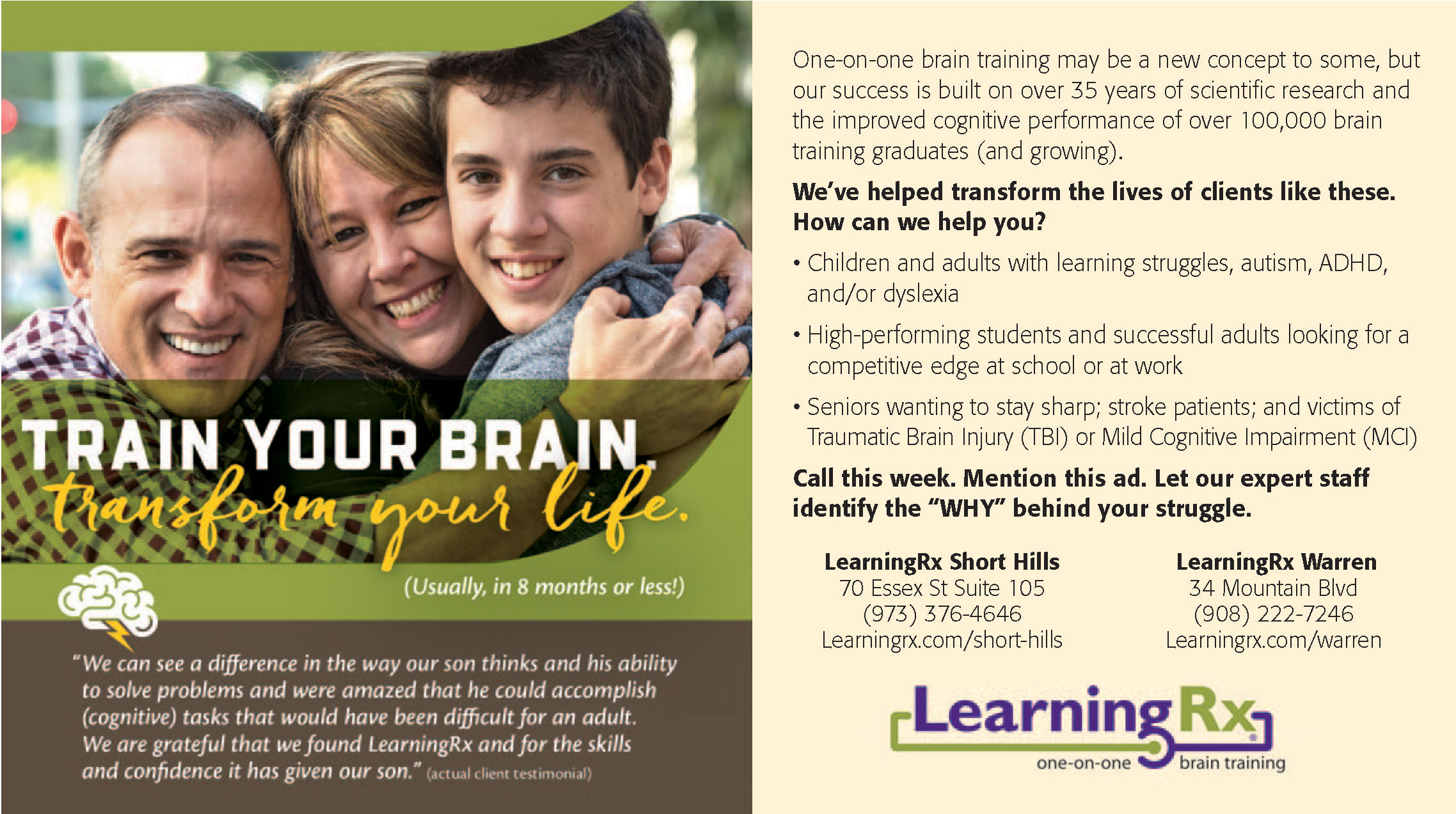

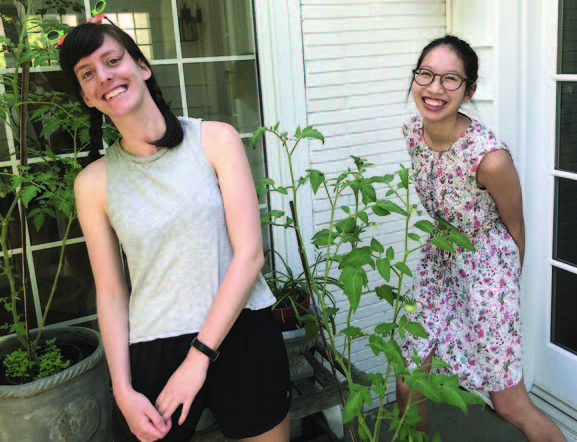 My husband and I are not newcomers to taking in friends in need. In fact, after Super Storm Sandy, we invited a family of five—three boys aged one to six and their parents—whose home had been flooded and was uninhabitable for two months. We and they had a blast together living like a cross-generational dorm.
My husband and I are not newcomers to taking in friends in need. In fact, after Super Storm Sandy, we invited a family of five—three boys aged one to six and their parents—whose home had been flooded and was uninhabitable for two months. We and they had a blast together living like a cross-generational dorm. 

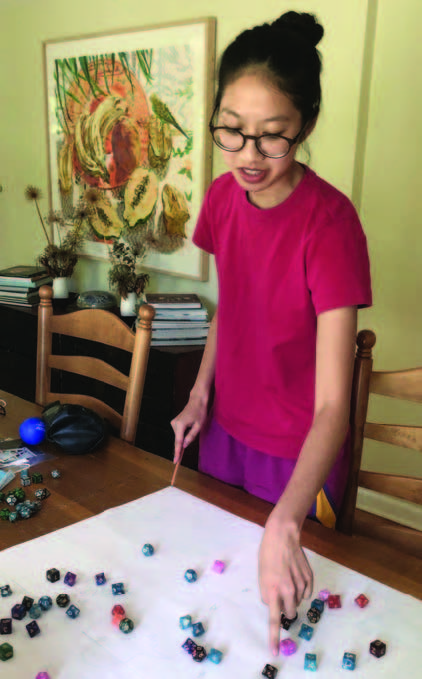

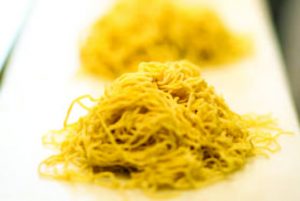

 Carton Brewing Company, one of the top craft beer producers in the state when the pandemic struck. With bars and restaurants shuttered, he and cousin Chris Carton immediately started thinking local. They ramped up production of a beer named 077XX—those three numbers start the zip codes of most Jersey Shore towns—which they had already been developing based on a “flavor commonality” that had emerged during extensive market research. Carton Brewing focused on what would appeal to the most common denominator among local beer drinkers—so no, not for the careful consideration of an educated palate (as with their other products) but for consumption by the “most drinkers possible.” Devotees old and new have been heading to the company’s new facility in Atlantic Highlands to fill their personal growlers and crowlers with their new flagship beer, the aforementioned 077XX, ever since.
Carton Brewing Company, one of the top craft beer producers in the state when the pandemic struck. With bars and restaurants shuttered, he and cousin Chris Carton immediately started thinking local. They ramped up production of a beer named 077XX—those three numbers start the zip codes of most Jersey Shore towns—which they had already been developing based on a “flavor commonality” that had emerged during extensive market research. Carton Brewing focused on what would appeal to the most common denominator among local beer drinkers—so no, not for the careful consideration of an educated palate (as with their other products) but for consumption by the “most drinkers possible.” Devotees old and new have been heading to the company’s new facility in Atlantic Highlands to fill their personal growlers and crowlers with their new flagship beer, the aforementioned 077XX, ever since. 


 Shampoochies. Owner Sherri Amador was faced with a steady stream of horrendous home grooming disasters and a large number of dogs that were channeling the fear and stress of their stay-at-home owners. In addition to minimum-contact drop-off and pickup practices, her groomers began offering soothing massages to stressed-out pups and added a dog training option as another creative add-on to make up for the loss of vital revenue from the sale of treats, leashes, and other impulse items. Sherri confirmed the fact that her staff has upped the ante on TLC—both for dogs and their owners—and has corrected a number of strange grooming attempts by her clients. These tweaks and their great results helped Sherri recapture 70% of her business, which has enabled her to keep three full-time groomers busy. And tips are up from grateful customers, she adds.
Shampoochies. Owner Sherri Amador was faced with a steady stream of horrendous home grooming disasters and a large number of dogs that were channeling the fear and stress of their stay-at-home owners. In addition to minimum-contact drop-off and pickup practices, her groomers began offering soothing massages to stressed-out pups and added a dog training option as another creative add-on to make up for the loss of vital revenue from the sale of treats, leashes, and other impulse items. Sherri confirmed the fact that her staff has upped the ante on TLC—both for dogs and their owners—and has corrected a number of strange grooming attempts by her clients. These tweaks and their great results helped Sherri recapture 70% of her business, which has enabled her to keep three full-time groomers busy. And tips are up from grateful customers, she adds. 
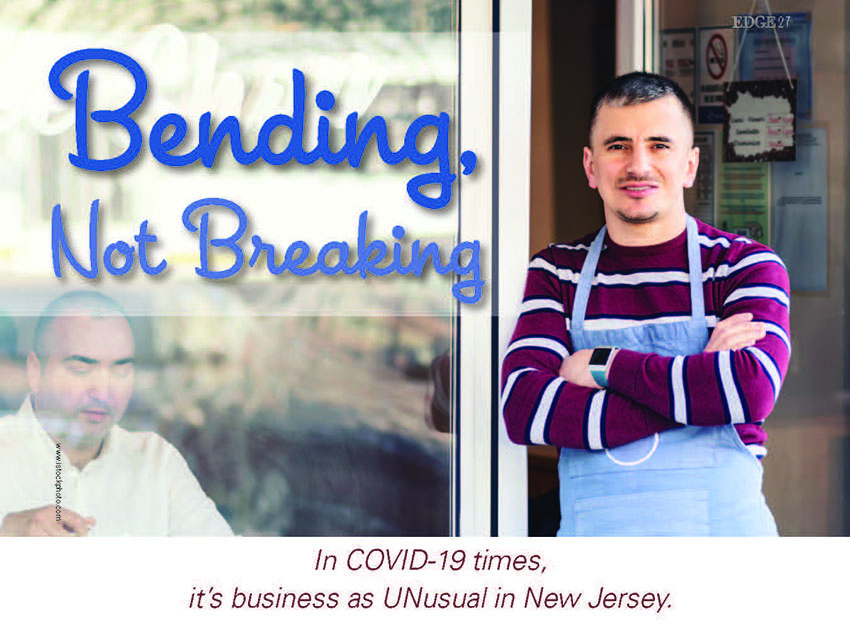





















 1990 • Donald & Ivana
1990 • Donald & Ivana  1991 • Not Gonna Phone It In Tonight
1991 • Not Gonna Phone It In Tonight  1998 • Bill, Monica, Saddam & Tim
1998 • Bill, Monica, Saddam & Tim  2008 • The Katie Couric Interview
2008 • The Katie Couric Interview  2000 • Bush V. Gore
2000 • Bush V. Gore  2010 • We Are the World
2010 • We Are the World  2016 • Democratic Debate
2016 • Democratic Debate  2019 • The Cool Table
2019 • The Cool Table  2019 • Impeachment Talk
2019 • Impeachment Talk  2020 • Dr. Fauci on Zoom
2020 • Dr. Fauci on Zoom 



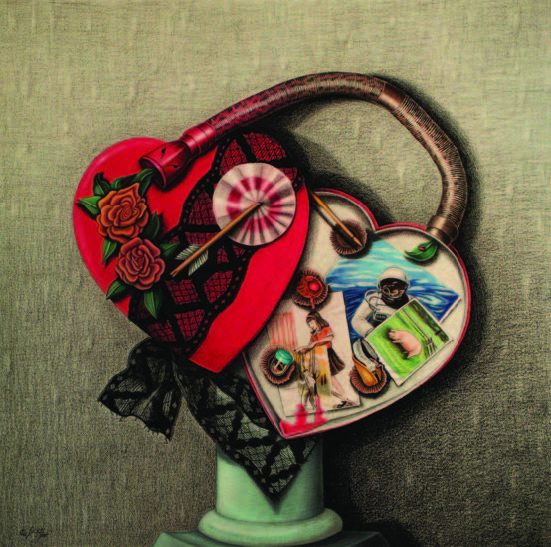





 Contemporary mixed media artist Chantell Van Erbé of North Bergen grew up in a family where art was “definitely in the blood.” Born in 1969, she drew freely on the walls of the family’s brownstone as a child in Weehawken. “I was surrounded by culture from birth,” she says, describing museums and art galleries as her “playgrounds” during the 1970s and 1980s. “I had little choice but to submit to a higher creative vision.” Painting is self-expansion, Chantell believes, a beautifully maddening and meditative process: “My technique is best described as process overflowing in transition.” Indeed, it exudes raw energy, fresh vision, bold colors and immediacy of place. Her art is less the reality she sees than the reality she remembers and, as she responds to subjects in both inner and outer worlds, she discovers new ways to encourage viewers to mindfully enter her work. “Art is a series of evolutions, numerous characterizations and endless connotations,” she says. “What tremendous power in those three letters!”
Contemporary mixed media artist Chantell Van Erbé of North Bergen grew up in a family where art was “definitely in the blood.” Born in 1969, she drew freely on the walls of the family’s brownstone as a child in Weehawken. “I was surrounded by culture from birth,” she says, describing museums and art galleries as her “playgrounds” during the 1970s and 1980s. “I had little choice but to submit to a higher creative vision.” Painting is self-expansion, Chantell believes, a beautifully maddening and meditative process: “My technique is best described as process overflowing in transition.” Indeed, it exudes raw energy, fresh vision, bold colors and immediacy of place. Her art is less the reality she sees than the reality she remembers and, as she responds to subjects in both inner and outer worlds, she discovers new ways to encourage viewers to mindfully enter her work. “Art is a series of evolutions, numerous characterizations and endless connotations,” she says. “What tremendous power in those three letters!”  Prepare for Takeoff
Prepare for Takeoff 

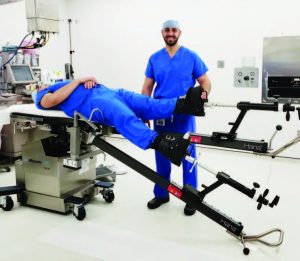 Extensive touring and physical wear and tear on Testa over the years resulted in a hip condition that took him off his feet earlier this year. A born performer, Testa knew he couldn’t take chances with anything other than the best care and technology when it came to receiving an artificial hip—a critical joint for someone who needs to command the stage for a living. After researching hip replacement procedures, Testa decided to seek out a facility that uses the Hana Orthopedic Table (right) in its OR. The Hana Table has transformed how hip replacement surgeries are carried out: patient positioning via the table means the surgery can be minimally invasive, less painful, and with much faster recovery time. It all adds up to a vastly improved experience compared to hip replacements of even the recent past. A friend who had recently undergone surgery of his own recommended that Testa—who lives in Jackson Township—look into the work being done at Trinitas, which uses the Hana Table in its OR. After speaking to another friend, Nadine Brechner, Chief Development Officer and Vice President of the Trinitas Health Foundation, Testa chose Trinitas even though Elizabeth is 50-plus miles north of his home.
Extensive touring and physical wear and tear on Testa over the years resulted in a hip condition that took him off his feet earlier this year. A born performer, Testa knew he couldn’t take chances with anything other than the best care and technology when it came to receiving an artificial hip—a critical joint for someone who needs to command the stage for a living. After researching hip replacement procedures, Testa decided to seek out a facility that uses the Hana Orthopedic Table (right) in its OR. The Hana Table has transformed how hip replacement surgeries are carried out: patient positioning via the table means the surgery can be minimally invasive, less painful, and with much faster recovery time. It all adds up to a vastly improved experience compared to hip replacements of even the recent past. A friend who had recently undergone surgery of his own recommended that Testa—who lives in Jackson Township—look into the work being done at Trinitas, which uses the Hana Table in its OR. After speaking to another friend, Nadine Brechner, Chief Development Officer and Vice President of the Trinitas Health Foundation, Testa chose Trinitas even though Elizabeth is 50-plus miles north of his home. 

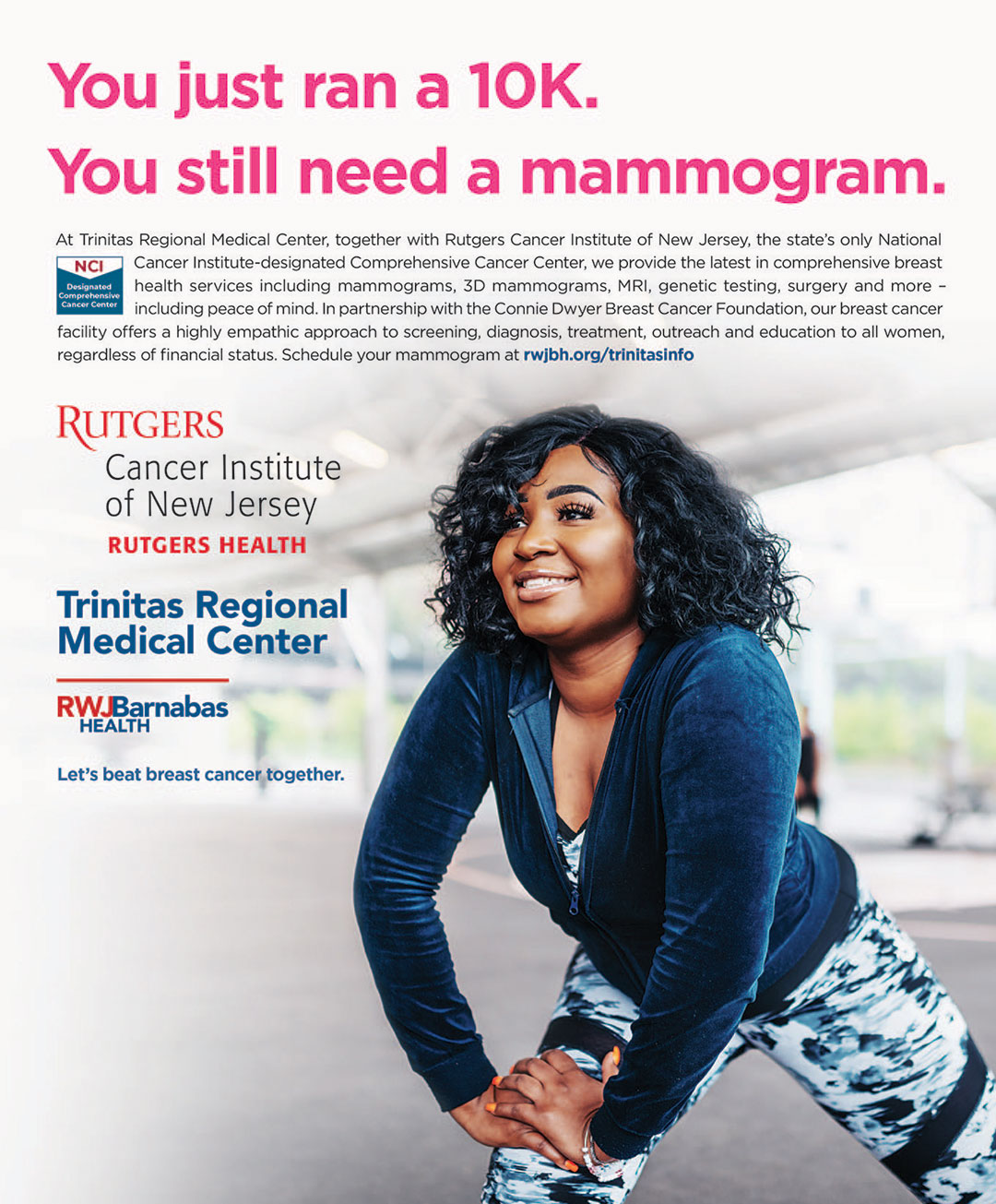
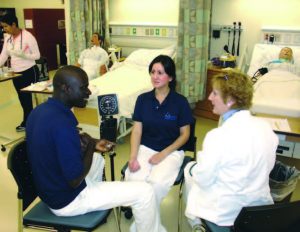 Also unprecedented in 2020 was the surge in interest among young New Jerseyans in entering the healthcare field—specifically nursing—at a time when there was no small amount of risk accompanying that decision.
Also unprecedented in 2020 was the surge in interest among young New Jerseyans in entering the healthcare field—specifically nursing—at a time when there was no small amount of risk accompanying that decision. 
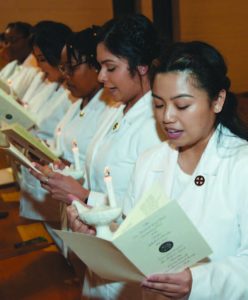 “I wish I could take every single one of our applicants,” she says, noting that some will have to be waitlisted. “It’s a balancing act, meeting the New Jersey Board of Nursing demand for more licensed nurses while adhering to state-mandated health protocols in our classrooms. We also have to bear in mind the guidelines required by the New Jersey Office of the Secretary of Higher Education.”
“I wish I could take every single one of our applicants,” she says, noting that some will have to be waitlisted. “It’s a balancing act, meeting the New Jersey Board of Nursing demand for more licensed nurses while adhering to state-mandated health protocols in our classrooms. We also have to bear in mind the guidelines required by the New Jersey Office of the Secretary of Higher Education.” 


